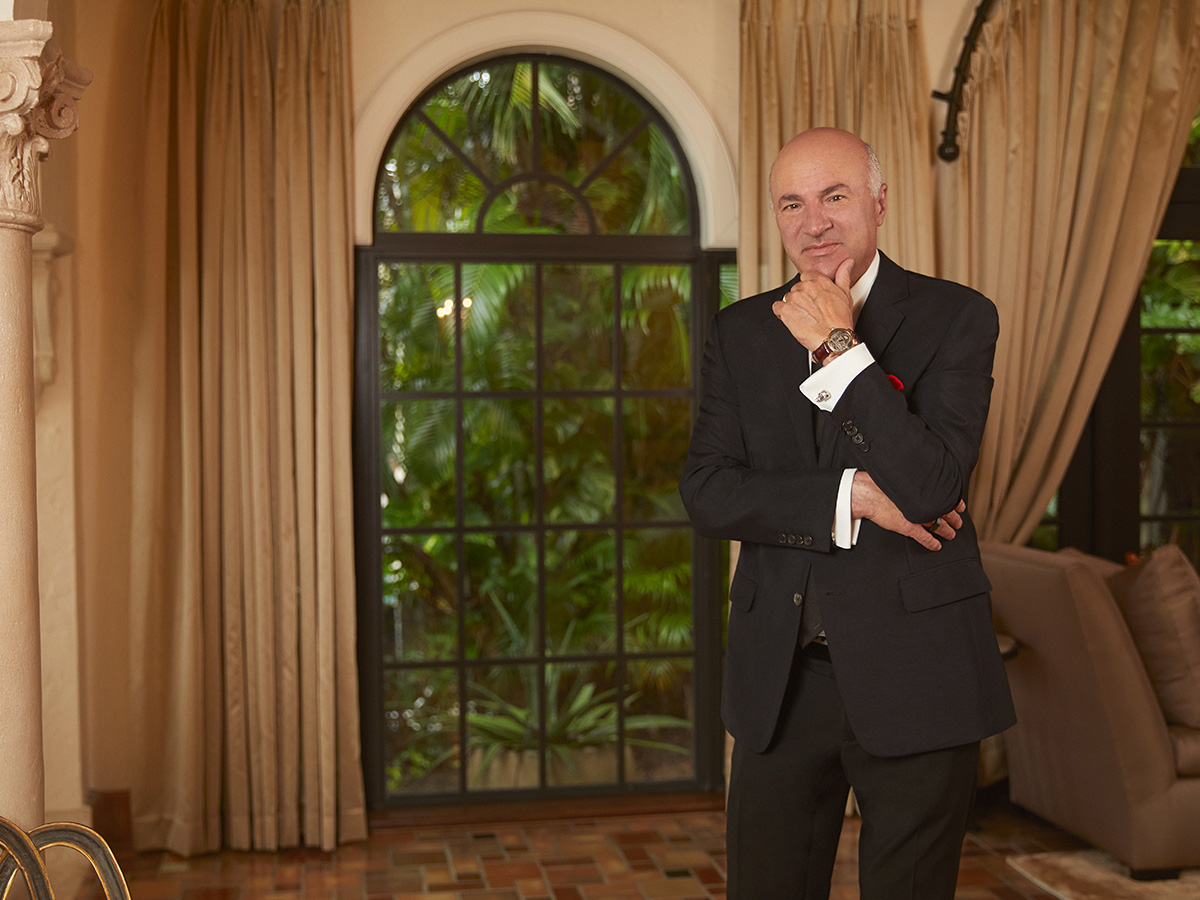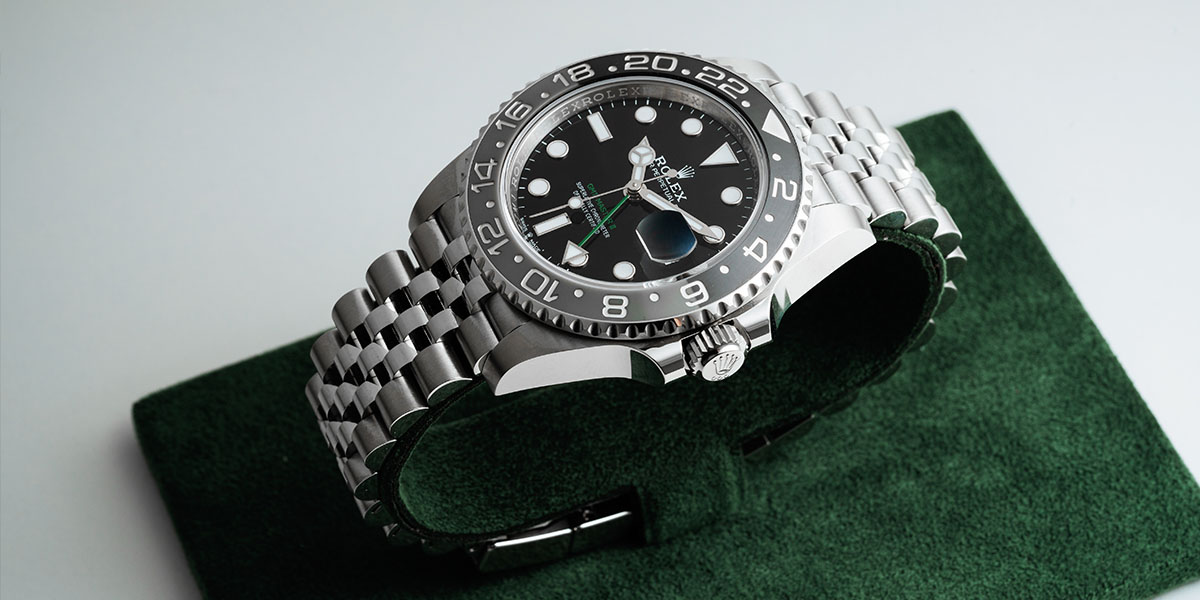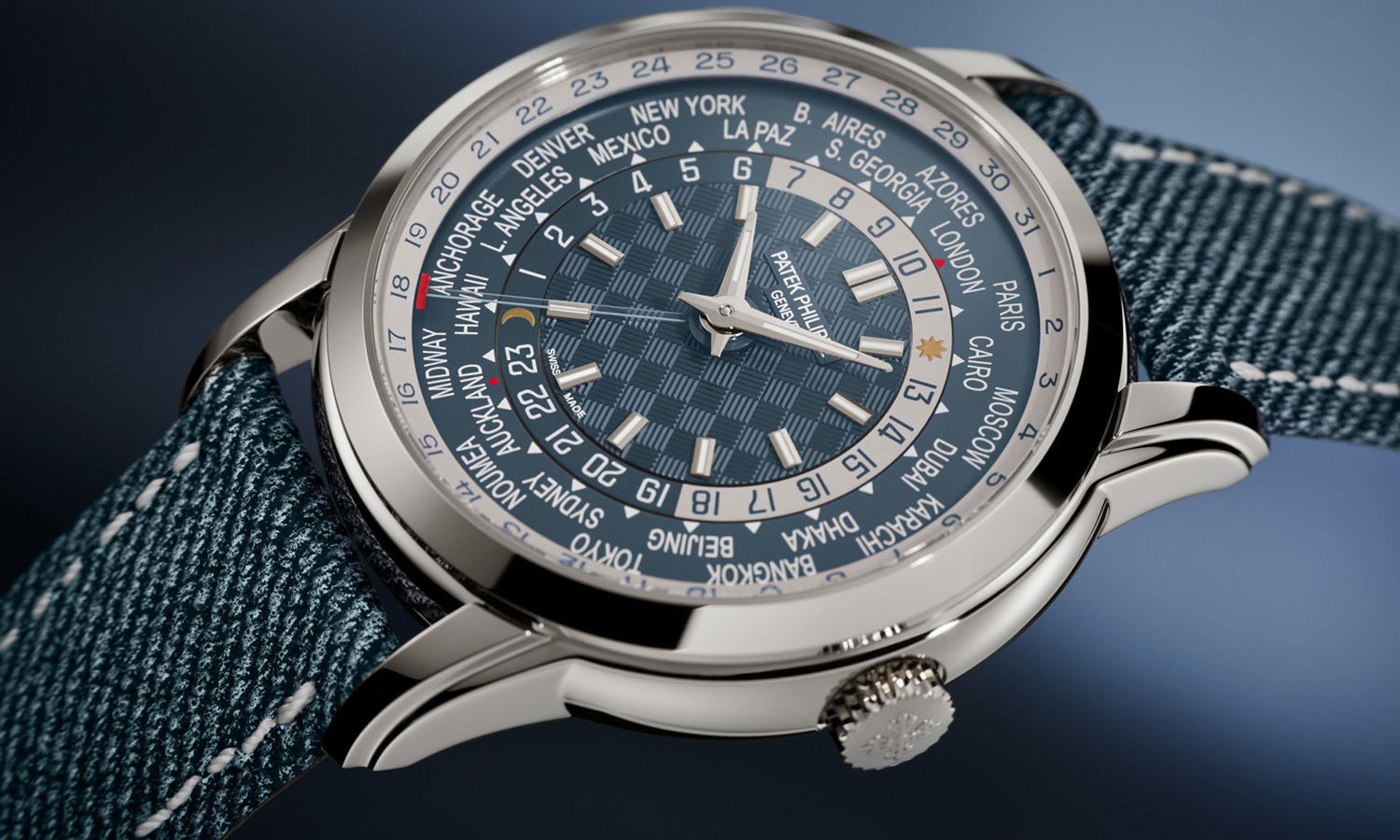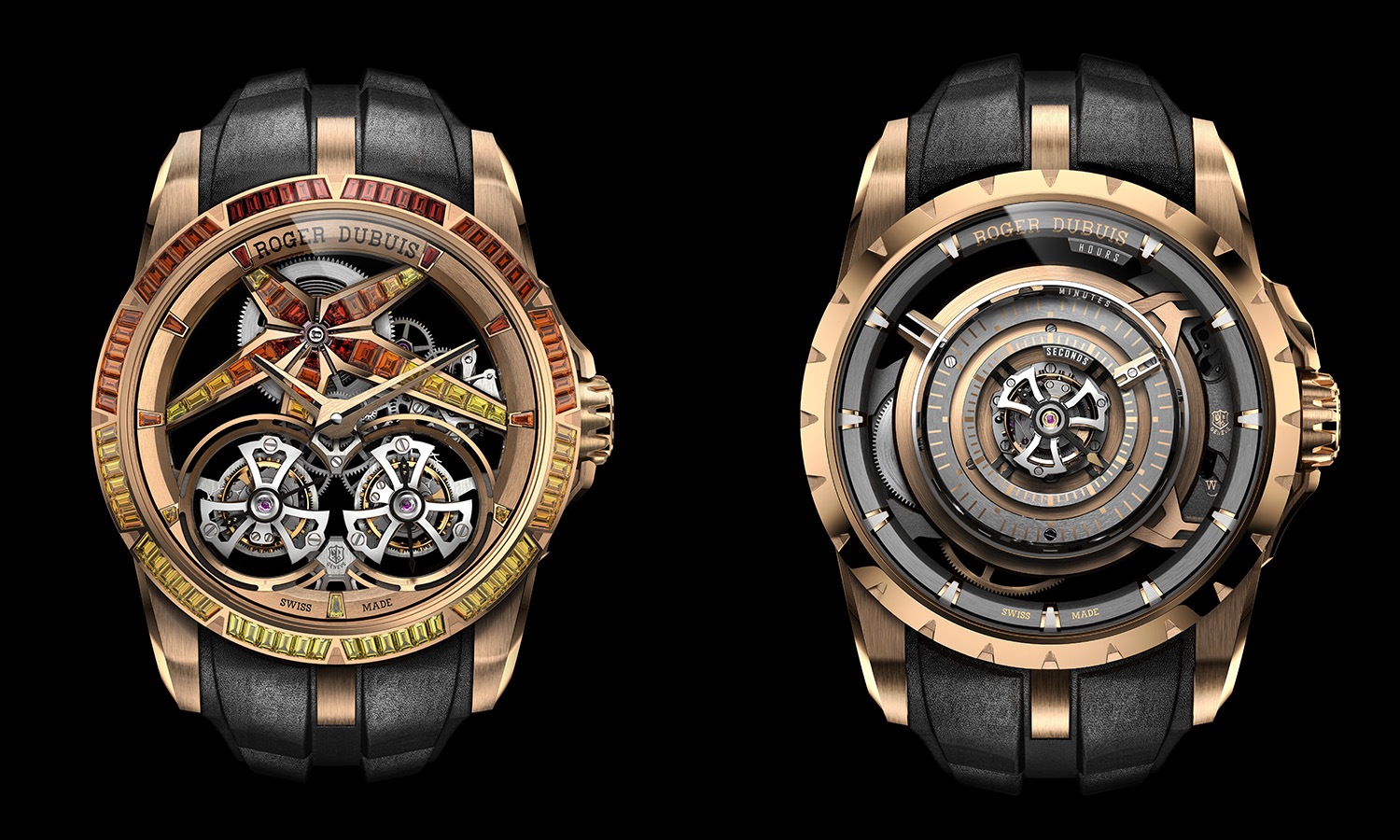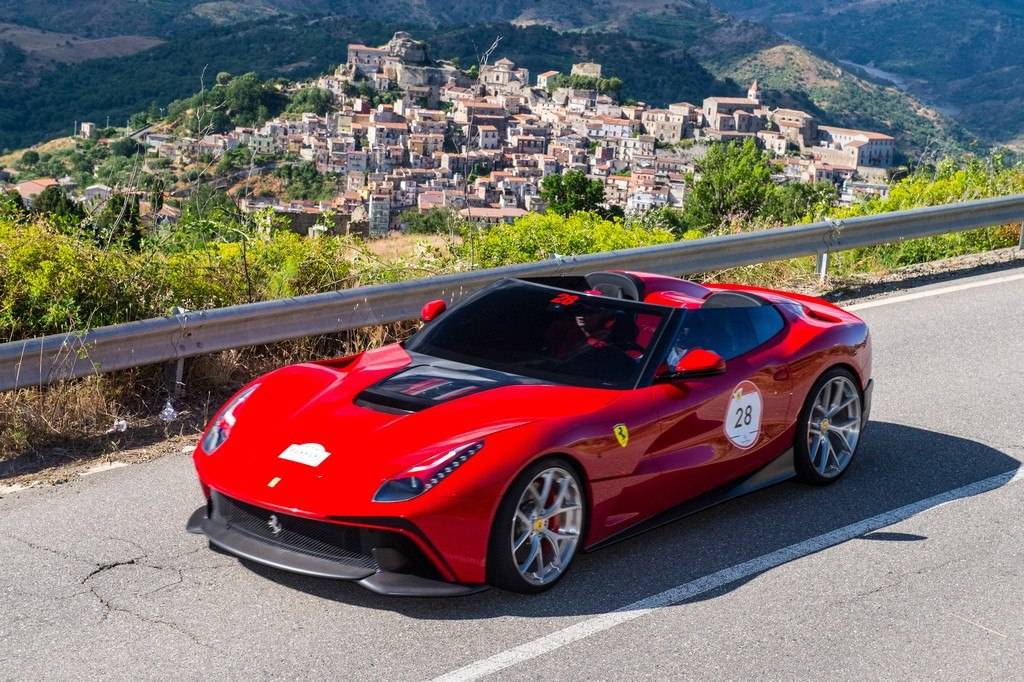
Ferrari F12 TRS’ Combines Sporty Elegance With Brute Power

There’s a scene in Ron Howard’s 2014 film Rush where actor Daniel Bruhl portraying F1 legend Niki Lauda is deriding the engineering of his new competition-ready Ferrari to one of the Italian supercar company’s mechanics to which the mechanic replies, “You can’t say that.” “Why,” says Lauda. “It’s a Ferrari!” simply replies he mechanic.
There was a time when Ferrari was so dominant in the field of supercars that to make such criticisms was indeed an absurd suggestion, and in many ways it still is. In the 1970’s, F1’s heyday, Ferrari drivers were the guys to beat, and the only company to even be in the realm of competition was the British McLaren. But, the times have changed, and companies over the decades have caught up, and certainly some car enthusiasts prefer the work of companies like Porsche and Maclaren. But let’s face it, even with a tougher market, Ferrari is still number one. They already dazzled moto-enthusiasts this year with the V12-powered 789 horsepower hybrid (1) production vehicle 2015 LaFerrari that ranked as the world’s most powerful production car for the year 2015. Ferrari’s engineering team is on a roll, and now they present another vehicle that is matched in its power only by its external beauty, the F12 TRS.
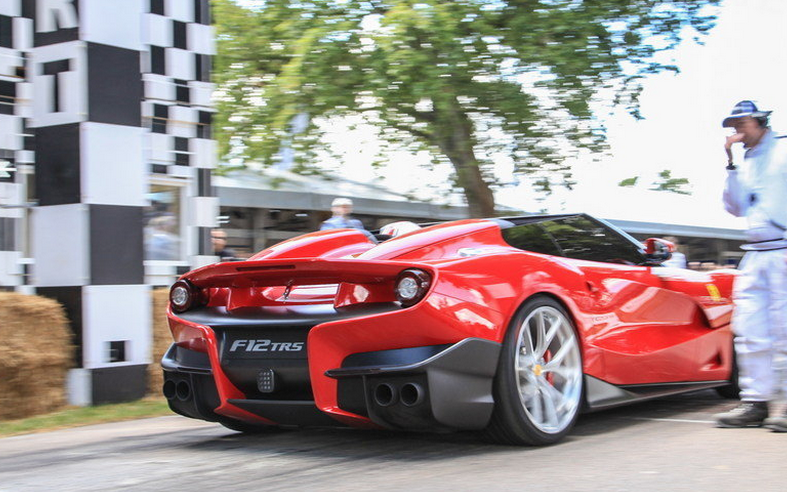
The F12 is one of Ferrari’s 90 vehicles that was shown at their third annual Calvacade, a Gran Turismo event that took place in the company’s home base of Sicily displaying new Ferraris to some of the company’s most valued, i.e. insanely wealthy and powerful, clients. The F12 TRS was built as a one-off custom model at the request of an unnamed Ferrari client. Ferrari has a team called the Special Projects Team that exclusively handles the custom models working with the specifities of high-paying clients. Clients like Eric Clapton and investment professional James Glickenhaus have worked with the Special Projects Team. As you would assume from those names, the cars are always nothing short of mind-blowing spectacular, and the F12 VRS is no exception to this rule.
Along with the Special Projects team, the F12 TRS’ look was designed by famed architect and supercar designer Flavio Manzoni (not available for comment) and Ferrari’s Style Centre Team. A two-seater with an open-top sports barchetta, the F12 VRS is based on the F12 Berlinetta but was originally inspired by the 1957 250 Testa Rossa. Manzoni and team drew on a modern take on that classic car’s spirit and pays homage to its design.
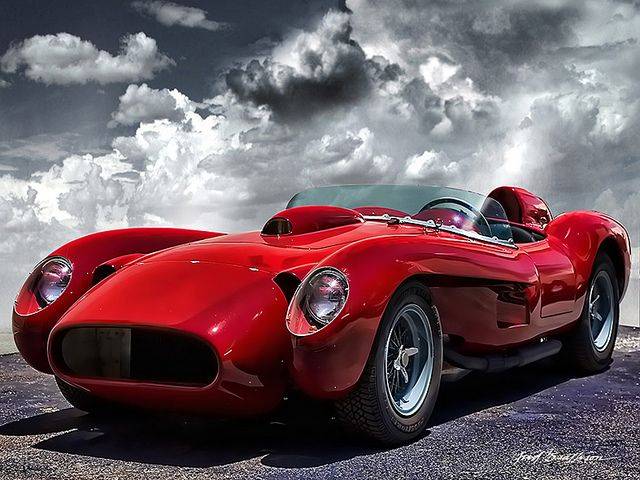
Like all custom Ferraris, “The F12 TRS is the product of Ferrari’s now-classic approach of creating a truly integrated design,” according to a press release released by the company.
The car has comparable performance ratings to the F12 Berlinetta, that is to say, the car has unbeatable performance ratings. 0-100 KM acceleration clocks at 3.1 seconds, due to a 740 CV and maximum torque of 690 NM at 9,000 RPM unleashed by 6262 CM3 V12 engine.
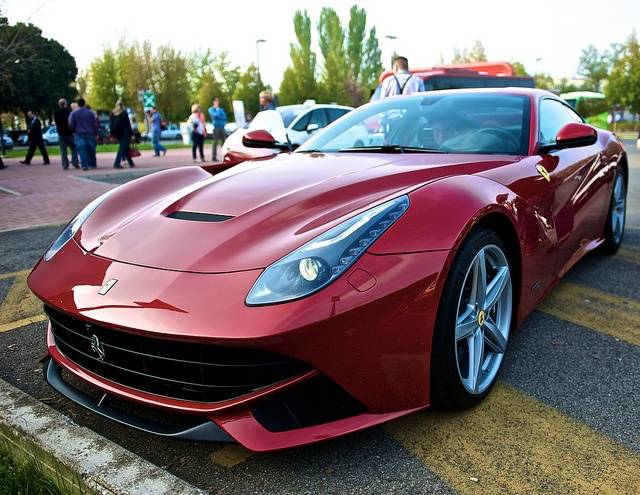
As in the case of the F12 TRS’s aforementioned influences, the exterior of the vehicle can only be described as an artfully rendered mish-mash of sporty soul and fashionable spirit. A Ferrari-esque sharp nose aggressively sculpted forms flow back over the bonnet, while a low, wraparound windscreen forms a long dark band of glass in contrast to the car’s body. The V12’s red cylinder heads stand visible through a window in the engine lead, a move inspired as inspired by 1950’s Ferraris as more recent Berlinettas. The aerobridge, design conceived of for the F12Berlinetta, has been redesigned for this model resulting in a design that runs back from the flanks through the entirety of the vehicle.
The tail of the car marks an evolution of the T-shaped graphic characterizing the F12’s truncated tail and is influenced to some extent by the cabin shape with long fuselage fairings running behind the headrests into the rear spoiler. A smooth ramp runs through the central tunnel connecting the interior and exterior and creating a longitudinal aerodynamic channel to deliver an innovative Venturi effect.
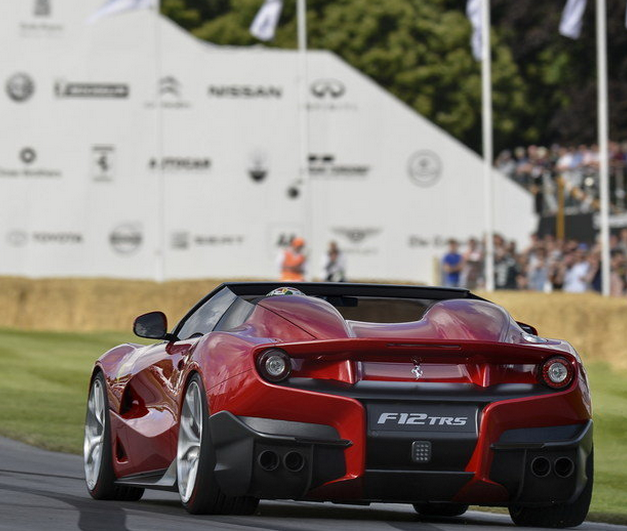
The cockpit conveys a minimalist aesthetic, with no concessions made to unnecessary comfort. Many automobile usuals like window controls, glove compartment, central air vents, and more have been ripped out, pairing the car down to only the most stylish of elements.
No question about it, the F12VRS is just another example of Ferrari’s production car dominance not up for debate. Other companies come close, but with custom vehicles like this Ferrari is the most creative, efficient, and prolific in their creation of original designs. Whomever the buyer of this car is, is one extremely lucky luxury car consumer.
 SIGN UP
SIGN UP


